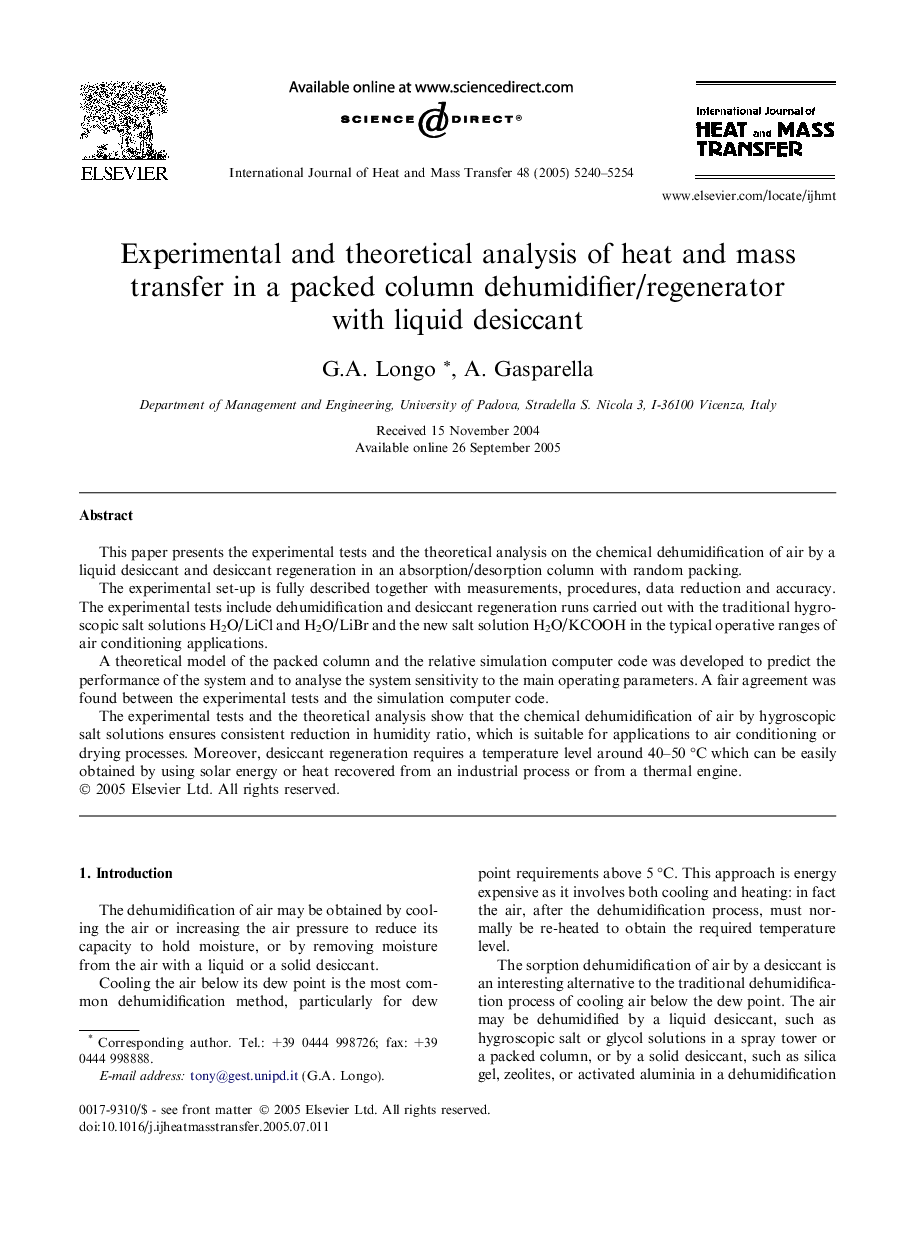| Article ID | Journal | Published Year | Pages | File Type |
|---|---|---|---|---|
| 662586 | International Journal of Heat and Mass Transfer | 2005 | 15 Pages |
This paper presents the experimental tests and the theoretical analysis on the chemical dehumidification of air by a liquid desiccant and desiccant regeneration in an absorption/desorption column with random packing.The experimental set-up is fully described together with measurements, procedures, data reduction and accuracy. The experimental tests include dehumidification and desiccant regeneration runs carried out with the traditional hygroscopic salt solutions H2O/LiCl and H2O/LiBr and the new salt solution H2O/KCOOH in the typical operative ranges of air conditioning applications.A theoretical model of the packed column and the relative simulation computer code was developed to predict the performance of the system and to analyse the system sensitivity to the main operating parameters. A fair agreement was found between the experimental tests and the simulation computer code.The experimental tests and the theoretical analysis show that the chemical dehumidification of air by hygroscopic salt solutions ensures consistent reduction in humidity ratio, which is suitable for applications to air conditioning or drying processes. Moreover, desiccant regeneration requires a temperature level around 40–50 °C which can be easily obtained by using solar energy or heat recovered from an industrial process or from a thermal engine.
